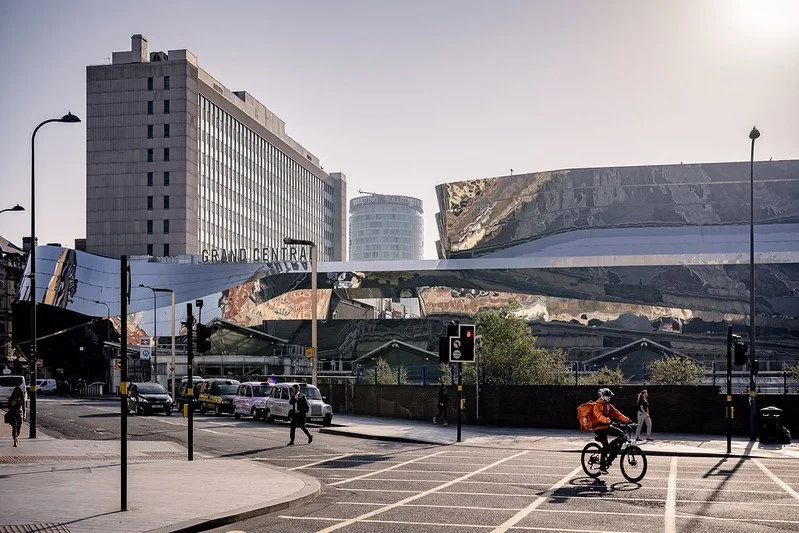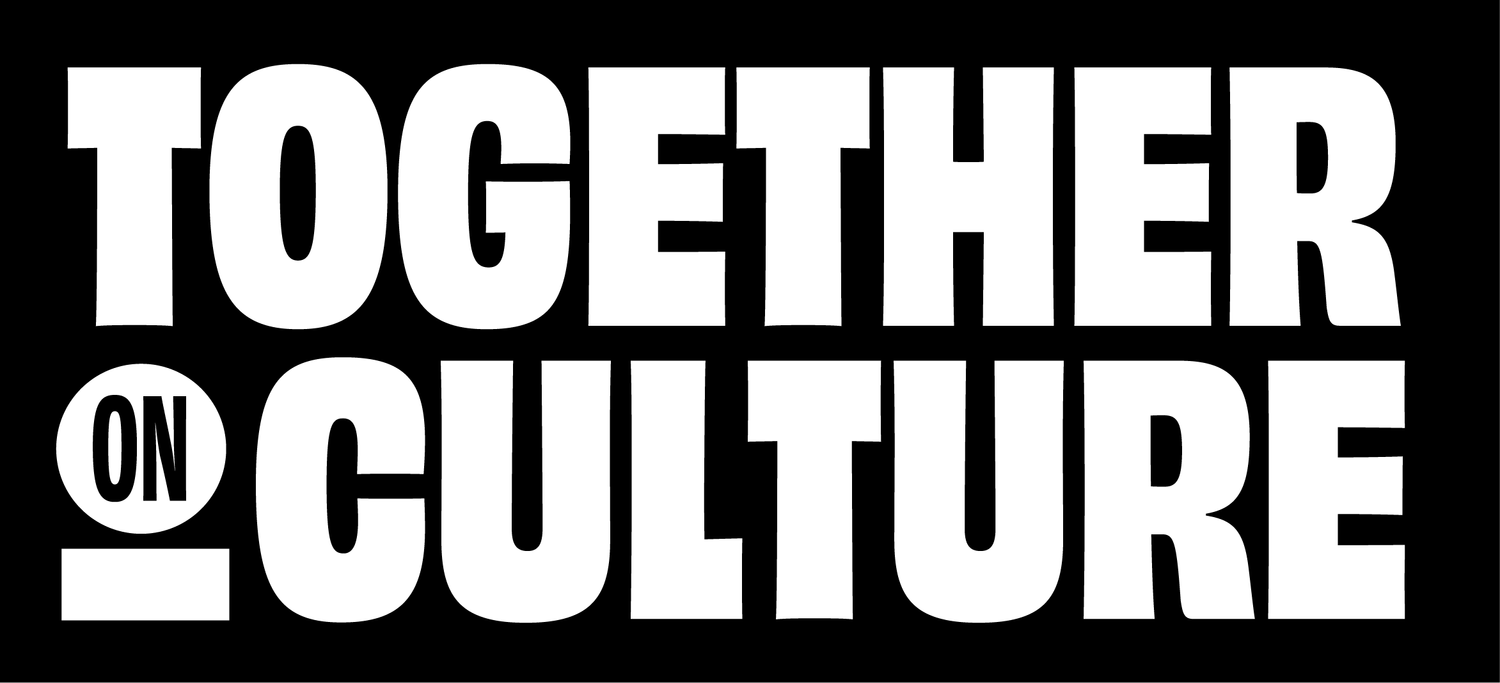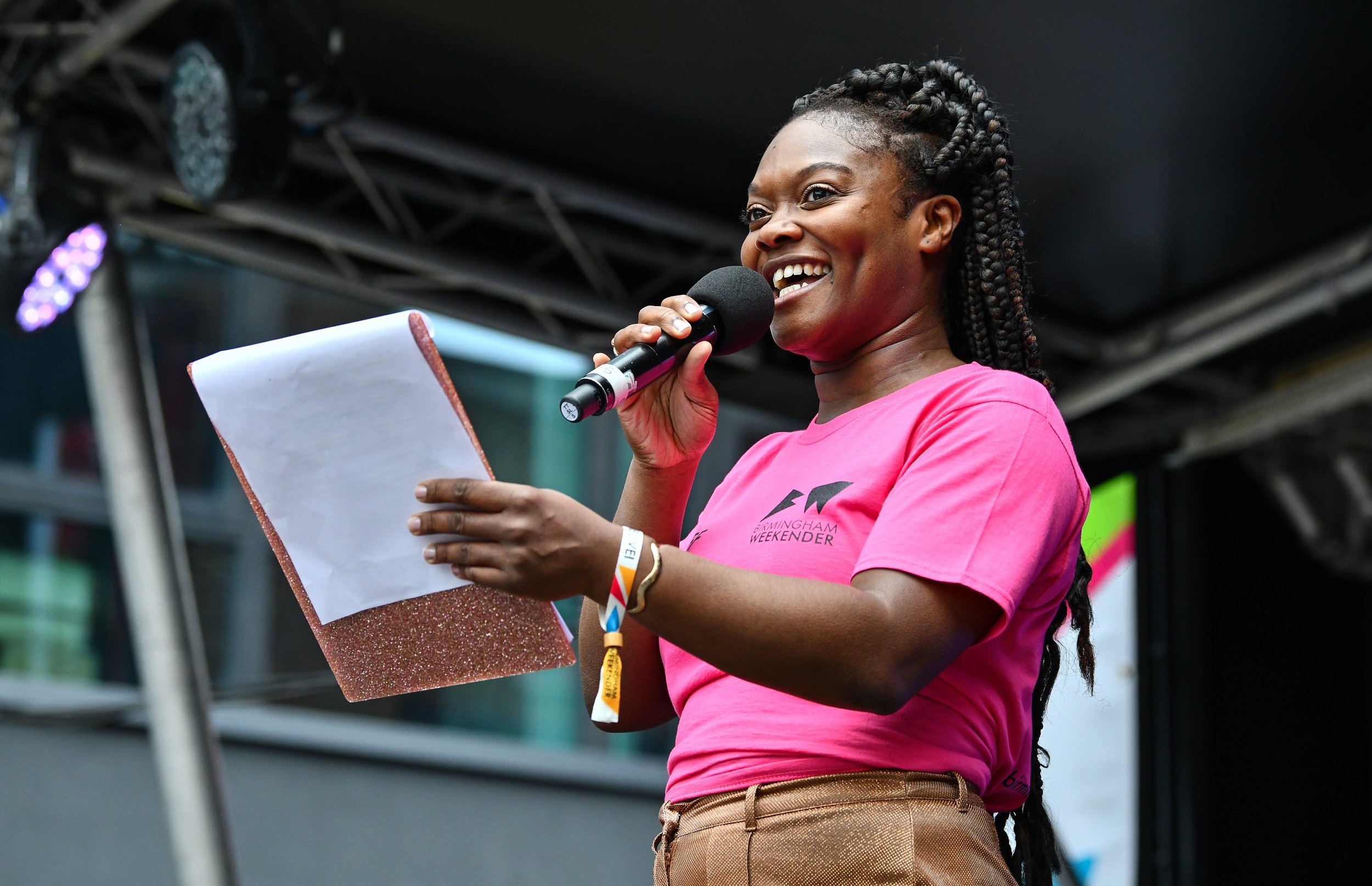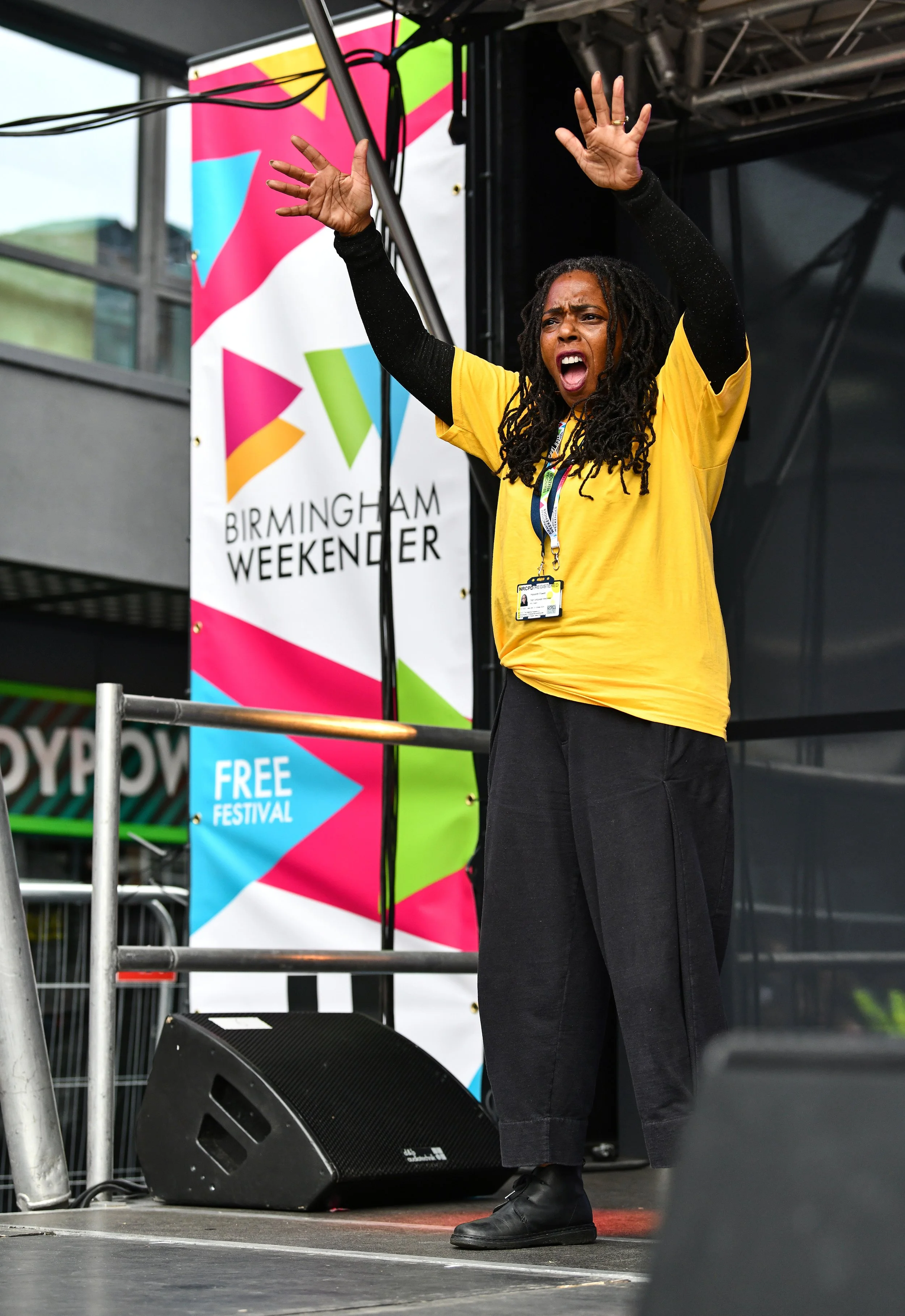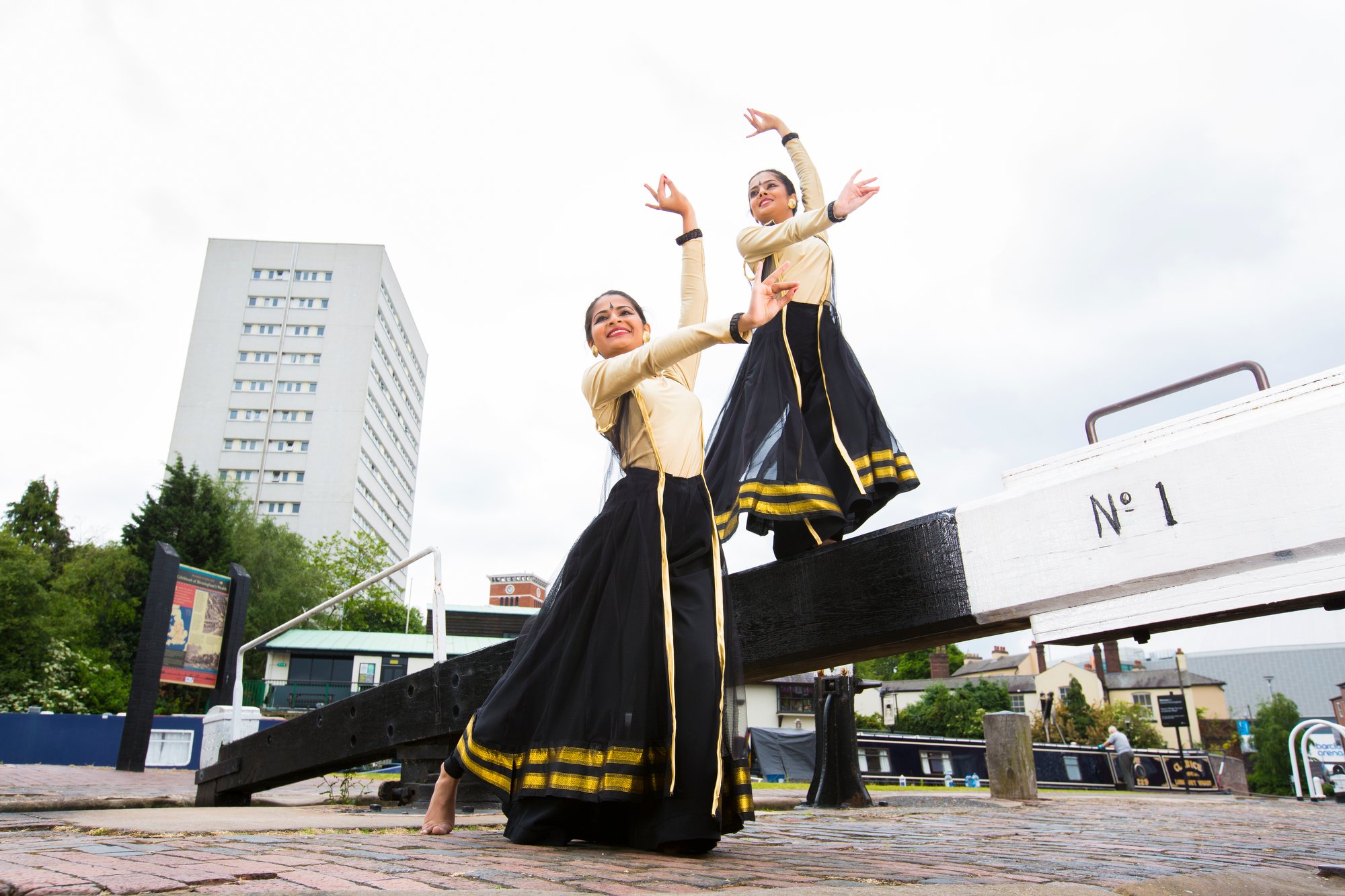Pillar 5: Culture for the People
Equality, diversity and inclusion (ED&I) both within and through culture and the arts is covered in this, our fifth pillar. We also look at reflecting the people of the city in our cultural work and using culture as a powerful force for empowering people and bringing our communities closer together.
Credit: Simon Hadley
Cultural Diversity is a Superpower
This framework has come at an exciting time for Birmingham, with the most recent Census revealing global majority populations represented 51.4% of Birmingham, naming Birmingham among Britain’s first ‘super-diverse’ cities. The term ‘global majority’, refers to the group of people in the city who do not consider themselves or are not considered to be white.
Chart illustrating the ‘super - diversity’ of Birmingham compared to other areas in the West Midlands and England & Wales.
Source: Birmingham City Observatory; Census 2021 - Office for National Statistics
This fusion of ethnicities collectively contributes to the incredible tapestry of Birmingham, each bringing their own form of culture to the table and it also sets the challenge for the next ten years (and beyond) of culture in the city. Our diversity also has a direct and dynamic impact on our cultural output, with programmes across all art forms emerging as internationally relevant with little conscious gearing from curatorial teams or artistic directors – we are naturally, global.
This new ten-year Framework aims to address ethnicity, gender, LGBTQ+ inclusion, age, class and disability, the importance of this has been voiced loudly and proudly by all residents and stakeholders involved in this consultation. There are a range of definitions and specific demographics covered by any imperative for diversity, and it is worth briefly spelling out what is meant by diversity here. First of all the global majority populations across Birmingham are in this Framework the non-white, ethnic communities whose origins lie in the Global South. Diversity also covers other ethnic populations sometimes overlooked, such as Eastern Europeans. Beyond this as stated above there are hugely important inequalities to be tackled around class, sexuality, disability, age and gender.
And also our vision for broader inclusion extends beyond long-term residents. It’s important to acknowledge that from the thousands of students to refugees and asylum seekers, there are individuals who may only be in the city temporarily, yet are an integral part of our community and deserve our connection and warm welcome.
Your voice on diversity
Cultural cohesion
Culture has incredible potential to bring our diverse communities together through art, self expression and entertainment and in the process can increase universal respect, tolerance and understanding. Over the next ten years it is essential that Birmingham continues to invest in and provide a cultural offer that encompasses and represents all of its residents – permanent and temporary.
Birmingham already has a fantastic range of organisations working with and reaching diverse audiences:
Celebrating Sanctuary Birmingham (CSB), is a diverse music and arts organisation with a mission to support, develop and celebrate refugee and migrant artists, and to engage through community projects with refugees and asylum seekers. Formed in 2002, CSB has developed three strands of work, including World Music Events & Refugee Week Festival, showcasing refugee and migrant artists; Artist Development with refugee and migrant artists; Community Engagement with refugees and asylum seekers.
Soul City Arts has a passion for using the arts to bring together people divided by culture, faith and ethnicity. Not afraid to address ‘the elephant in the room’, they use the arts as a tool to facilitate open dialogue, counteracting the divides facing modern society. Their work is characterised by deep visual spectacle and an immersive environment that engages all the senses.
Established in 2017, Freewheelin is a Birmingham based inclusive dance group that caters for disabled and non-disabled dancers. Freewheelin currently runs weekly in person and online classes which are open to all: any age, ability or experience.
Credit: Simon Hadley
Credit: Simon Hadley
However, it is essential that organisations like these do not remain on the periphery of culture in Birmingham but are brought into the fold, ensuring they are involved in, and direct conversations, through their lived experiences and sector knowledge.
At the same time it’s also imperative that ED&I is fostered across all organisations with the sector working together to share best practice, prompting tough conversations with each other to acknowledge weaknesses and pro-actively driving each other to be better.
For example, the Birmingham Hippodrome is industry-leading when it comes to providing relaxed performances for accessibility, and has found that meeting the needs of diverse audiences leads to creative innovation and new ways of doing things. These learnings need to be shared across the sector, especially to small organisations who may not have the funding to trial and are looking for proven and successful ways of improving accessibility.

Sense Touchbase Pears
Sense TouchBase Pears, located in Selly Oak, is a vibrant community hub dedicated to ensuring that everyone, regardless of disability, can participate fully in life. The centre seamlessly integrates health and social care services with a rich array of arts, sports, and wellbeing activities, fostering an environment where disabled individuals feel connected and included.
Representation in the workforce
This approach needs to extend to the cultural workforce too, ensuring the workforce represents all protected characteristics. Given that ten per cent of Birmingham residents identify as having a disability, the culture sector is perfectly centred to provide jobs to those with disabilities, in particular those with learning disabilities, mental illness, dyslexia and ASD/ADHD who may find increased barriers to employment in other professional fields and may be able to access non-sector specific funding to support this.
Alcohol-free spaces
For a city that celebrates a sizeable Muslim population, and with many wards across the city being up to 80% Muslim, it is important to recognise that for many, a cultural event with alcohol may present a barrier to engagement and so we need to ensure that there are alcohol-free cultural opportunities and that events like daytime festivals for example, are maximised to be inclusive to our Muslim residents.
Narrating the Postcolonial City
The postcolonial history of Birmingham, reflects the city's transformation from an industrial powerhouse to a multicultural metropolis grappling with the enduring legacies of colonialism and systemic subjugation. This history is rooted in its industrial prominence, migration patterns, and the socio-economic impacts of Britain's imperial past.
Telling the story of Birmingham and its incredible and sometimes controversial history means telling all its truths, not hiding away from them, and using the past to increase the awareness of residents and visitors in the future.
There are some excellent examples of the cultural sector telling the story of colonialism (and of wider historical inequalities such as class or gender). A standout example would be Birmingham Museum’s collaboration with We Don’t Settle, an organisation empowering young people from diverse backgrounds to reshape heritage narratives. This partnership led to the transformation of BMAG's iconic Round Room, co-curated by museum staff and six young women from Birmingham. The exhibition challenges traditional museum narratives by presenting an eclectic mix of art, photography, and objects that reflect both the historic and contemporary diversity of the city.
Of course, more can always be done to deepen the cultural sector’s connection and commitment to telling the story over the next ten years and the examples above should very much be the frontrunners of a much wider movement of truth-telling through culture.
Stories of Empire in the Jewellery Quarter
Culture for the People
Ensuring the people of Birmingham feel ownership of culture, encouraging greater levels of cultural engagement, and making sure young people are at the heart of our culture.
Generation B(irmingham)
Birmingham, one of Europe’s youngest cities with nearly half its population under 30, is home to five major universities and 90,000 graduates annually, reflecting a vibrant and promising future. By 2035, the city aims to be the best in Europe for young people and a world-leading Anti-Racist City, celebrating its diversity and youth. With a thriving entrepreneurial spirit, Birmingham seeks to empower its young population, fostering a sustainable economy that benefits all. Achieving this vision requires collaborative efforts to tackle challenges, drive innovation, and unlock opportunities that ensure a bright future for its dynamic and diverse youth.
Culture plays a pivotal role in the development of children and young adults – from inspiring play in early years, to increasing empathy and mutual understanding. From providing potential career routes, or simply the creation of long-lasting hobbies. Exposing young people to culture is a must, not a maybe.
How Birmingham continues to do this is touched on at multiple points throughout this strategy and includes:
Internships, training, skills development and updating skills & training needs analysis (Action 3.2 Develop the skills base and talent pipeline of the cultural and creative workforce)
Training to become ‘young’ board members (Action 3.1 Developing cultural leadership and routes to leadership at all levels)
Piloting a ‘Network for Young Creatives’ plus increasing access and participation in cultural activity (Action 5.2 Increase access to our creative practice and programmes for children and young people)
It will also be a core challenge for the Cultural Compact to engage with young people across the city and ensure that they feel full ownership of Birmingham’s cultural life.
Cultural Democracy
The Cultural Compact is a cross-sector partnership designed to support the city’s cultural sector and enhance its contribution to development; it has a special emphasis on cross-sector engagement beyond the cultural sector itself. It is perfectly placed in the city to ensure that the people of the city feel greater levels of ownership of culture and it is recommended that the Compact reports at least once a year, publicly, to the people of Birmingham, on the health and performance of the city’s cultural life.
Credit: Joe Bailey, FiveSixPhotography
Chain reaction
This section of Pillar Five is about recognising and maximising all that culture can do to enhance our quality of life and deliver against some of our most urgent priorities, from better health outcomes to the climate crisis and helping people back into work.
Health & Wellbeing
Culture has a direct and dramatic impact on health and wellbeing and, according to research published in November 2024 supported by the Department for Culture, Media and Sport (DCMS), generates £8 billion a year worth of improvements to people’s quality of life and higher productivity in the economy.
According to research by Frontier Economics, even occasional participation in arts events or cultural activity delivers a range of benefits that can include alleviating pain, frailty, depression and dependence on medication. The impact on individuals of taking part in organised artistic, musical or theatrical activities has also been measured, people felt happier and that their lives had more meaning and value as a result.There is, rightly, a focus throughout this framework on culture and young people but this impact area, of health and wellbeing, is an excellent example of where older people across the city should feel ever-more included in our cultural life.
Birmingham has a rich cultural landscape and this has really helped the city integrate arts and culture into its health and wellbeing offer, including through what are known as social prescribing services, where local museums, galleries, and community arts organisations can collaborate with healthcare providers to offer tailored programmes that are literally ‘prescribed’ to patients as ways to improve their overall health and wellbeing.
For example Ikon Gallery, Spectra Arts, Ex Cathedra, Zawiya Trust and Birmingham’s Women’s and Children’s NHS Foundation Trust all have had or continue to run programmes with a specific focus on bringing arts and culture to those that need it most.
The city also has public health research officers working with the City Council, BMAG and other city cultural institutions. This work supports thriving research and development clusters across Birmingham and has developed Researchers-in-Residence at arts, culture, and heritage institutions. These conduct research that furthers the evidence base demonstrating the value of Creative Health in Birmingham by working in partnership with arts, cultural and heritage organisations for the benefit of individuals, communities, and organisations. The project partnered with four large scale creative organisations in Birmingham - Birmingham Museums Trust, Birmingham Hippodrome, Ikon Gallery and Midlands Arts Centre.
However, whilst well established, the benefits are often underplayed, not receiving the appropriate acknowledgement (or funding). There’s a real need over the next ten years to turn the dial up on these projects and help drive the narrative around what culture does for health in terms of its benefits and impact.
From discussion with stakeholders, it’s clear that one output of this framework should be organisations and individuals working harder to evidence the benefits and impact via compelling and comprehensive storytelling.
The Art of Sustainability
The nature and climate crises are defining challenges of our time and impact on culture and the arts in a number of clear ways, all of which we want to ensure are reflected in this strategic framework.
First there is, of course, a ‘getting your house in order’ imperative to ensure that every cultural institution in the city is acting on sustainability and has a plan to work towards net zero in line with wider city targets. Birmingham declared a climate emergency in 2019 and set an ambitious target ‘to become net zero carbon by 2030, or as soon as possible thereafter as a just transition allows’.
Whilst hosting the Eurocities Culture Forum in 2023, Birmingham City Council signed up to the 'Lille Call to Action on sustainable culture' committing cities across Europe to implement strategic actions to create greener cultural practices and ensure that culture is accessible to all citizens.
In 2024, the City Council also formally pledged support for the Climate and Ecology Bill, a plan for a new UK law that addresses the full climate and nature crisis in line with the most up-to-date science.
There is already some great work being done on culture and sustainability across the city with support for Culture Declares, sustainability work at Culture Forward, STEAMhouse and Eastside Projects and work across the city to adopt the sustainability framework drawn up by Julie’s Bicycle. Many of the city’s cultural organisations are already collaborating through the Sustainable Arts West Midlands network.
The city’s cultural organisations and cultural life can also play an important role in achieving what’s been called a ‘just transition’ to a more sustainable future by working with communities most affected by climate change, particularly those from areas of the world that will feel the impacts of climate change most acutely, such as Bangladesh.
Culture can also fold sustainability strongly into its storytelling, inspiring people to make positive changes in their everyday lives.
And in our push to increase the level of culture in local communities, culture should be part of the scope for creating liveable, local neighbourhoods where services can easily be accessed on foot or by bike.
Sustainability in action at Birmingham Rep
Pillar 5: Action Areas
